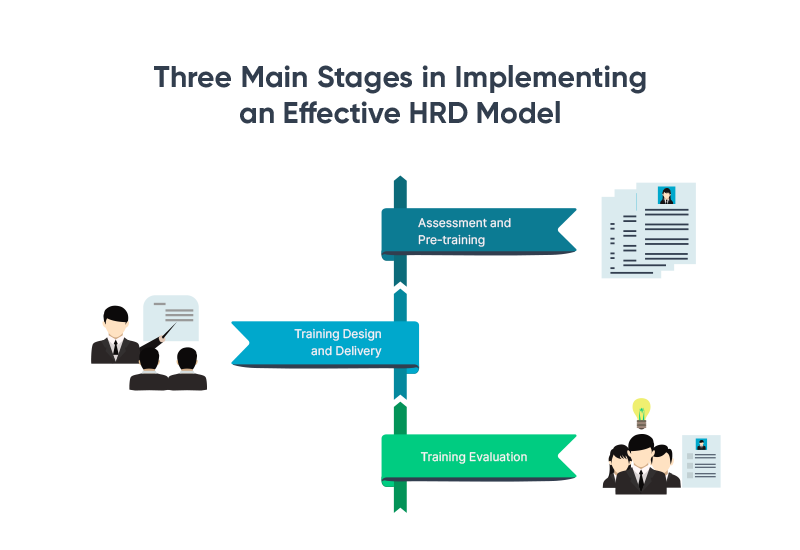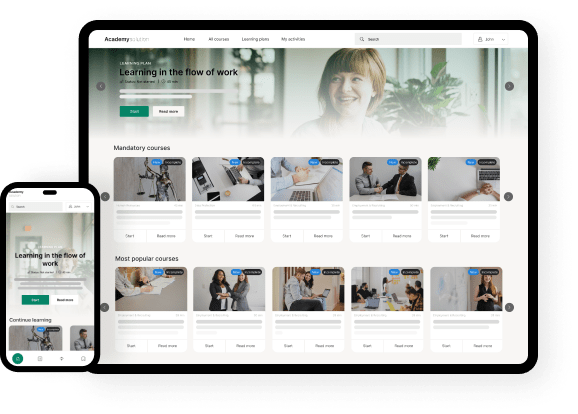You’ll hear this common expression from CEOs and executives: “Invest in people, they are your greatest asset.” It’s because they know they depend on their human resources to achieve success. At the end of the day, companies do not create value—people do. Obviously, many organizations are investing in human resource development to increase their competitive advantage.
While it is the main responsibility of the human resource department to handle employee management, its success depends on your company’s overall commitment to promote a learning culture. Developing strategies that will improve employee experience requires a collaborative effort from all the members of the company, of course, spearheaded by the HR department.
Whether you talk about a small or large enterprise, human resource development has a business or financial sense. In that regard, we’d like you to know more about human resource development. Part of this discussion are the important things you need to consider when building your own program. First, let’s define what human resource development is.
What is Human Resource Development?
Think of human resource development as a framework or system that is designed to improve or develop employees’ skills, knowledge, and abilities. Its purpose is to enhance individual or organizational competences.
In their article, HRD: The Shapes and Things to Come, David Simmonds and Cec Pedersen defined human resource development as “a set of structured and unstructured learning and performance-based activities.”
Human resource development is also an organized series of learning activities, within a specified time limit.
Some use the terms human resource development (HRD) and human resource management interchangeably; both though involve different responsibilities.
While human resource management focuses on matters such as labor relations, compensations, benefits and compliance, human resource development is about training employees, aligning their personal and professional goals with the company’s own objectives.
HRD Programs: Formal and Informal
HRD programs can be both formal and informal. This is because companies have different training opportunities inside and outside the workplace.
Formal trainings include in-house training such as:
Mentoring or employee coaching program is a form of informal training or micro learning. With this type of learning, mentors and mentees strengthen their sense of camaraderie.
Benefits of an HRD Program
Proactive companies understand the value of human resource development. Many consider human resource development as the key to higher productivity, greater profitability, and improved workforce relations. With that being said, here are the benefits of human resource development:
Satisfies Employees
In a research made by Udemy, 42 percent of respondents said that learning and development were deciding factors when choosing a workplace. This means to have committed and satisfied employees, businesses must have initiatives for employee growth and professional development. Satisfying your employees’ needs for personal and professional growth gives them a sense of direction — a clear career path. This is valuable because, in a survey made by Mercer states that 78% of employees said they would stay longer with a company if they see a clear career path.
Improves Performance
Expect something good in return from employees who give their heart and soul to your organization. When employees feel that companies invest time and resources for their development, they express their gratitude by optimizing their performance.
Aside from the fact that you’ll be able to hone their skills through different training programs, you’ll also motivate them to work harder and increase their efficiency. Remember that high levels of employee motivation are linked to high levels of employee engagement.
Enhances Organizational Effectiveness
Mohanad Ali Kareem of Kaposvár University made a study which aimed to find the positive relationship between human resource development and organizational effectiveness. The result of the study revealed that all the HRD practices are predictors of organizational effectiveness. That’s the reason why HRD practices enhance the internal capabilities of an organization to deal with current or future challenges.
Promotes a Healthy Corporate Culture
A strong and effective human resource development program creates a healthy corporate culture. Process elements like role clarity, proper communication, and competency awareness, are key contributors to fostering openness, trust, authenticity, and autonomy within a corporate setup.
Three Main Stages in Implementing an Effective HRD Model
Now that you understand what HRD is and the benefits that it can bring to your company, it’s time to implement your program. However, there are three main stages that you need to incorporate in the process in order to maximize its success. Authors Herman Aguinis and Kurt Kraiger proposed these three stages: assessment and pre-training, training design and delivery, training evaluation.

Assessment and Pre-training
Maximizing the benefits of your HRD training requires conducting an assessment to make sure trainees are predisposed and motivated to undergo such process. Part of this stage is to identify the specific knowledge, skills, and abilities employees need to attain.
It’s important to remember, though, that this analysis should be in congruence with the company’s mission and goals. Once these goals are identified, it will be easier for you to highlight gaps between the desired results and the actual performance.
Training Design and Delivery
When it comes to designing appropriate training initiatives, experts suggest applying these theory-based learning principles:

Moreover, research indicates that using technology has the biggest upside in your HRD program.
Training Evaluation
Measuring the success of your training initiatives can be done in several ways, commonly, through documentation. When performing a post-training assessment, it should emphasize the declarative knowledge acquired by the trainee.
In other words, the trainees must display “cognitive learning” after the training process. Cognitive learning translates to acquisition and application. The learner — with his or her cognitive learning — must be able to recall acquired theoretical concepts and apply it in real-life situations.
Make Us Your Partner in Your Human Resource Development
As your employees continue their career with you, they’d be looking for more opportunities to flourish. When they gain enough experience, knowledge, and confidence, you can now tap them to mentor incoming employees. This one way of sustaining the success and improvement of your HRD program.
Of course, you cannot always rely on your own employees or leaders to do the job for your company. Furthermore, the landscape of human resources is never static. Significant shifts in the delivery of human resource development programs can be seen in a not-too-distant future. Modern models of HRD tools and services will soon replace the traditional ones.
Many companies would agree that technological innovation is the greatest driving force in the transformation and modernization of human resource services.
Businesses are looking for smart solutions that will help them modernize their services, most especially their human resource development process. Though these developments might look a little daunting, its effects are largely recognized.
If you are looking for opportunities to strengthen your talent management and increase its overall impact on your business, consider partnering with us at Cursum. Let us help you manage the delivery of effective training experiences by providing you with strong and smart solutions.
We understand that businesses need to meet the demands of the ever-changing and fast-moving digital landscape. That’s why we collaborate with various companies to create digital infrastructures, especially LMS and LCMS solutions that can be tailored to specific business goals and objectives.
Know more about what we can offer your company as regards building a technology that will improve and support your human resource development efforts.



